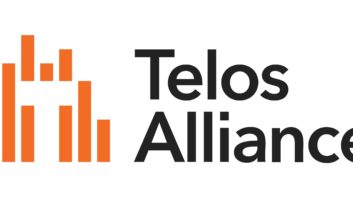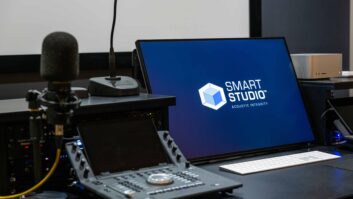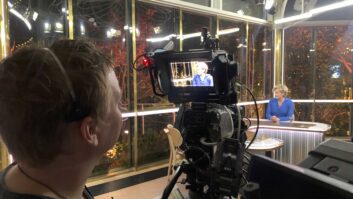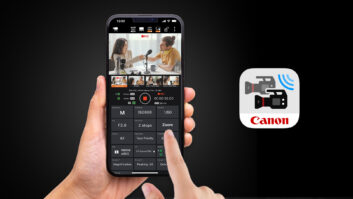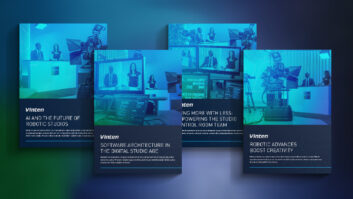What I am about to tell you is not new. You know the story. You see it every day when you watch the news, look on your tablet and use your smartphone at the same time.
If we try to imagine the world in 2020, we would see the multiplication of consuming platforms – web, smartphones, tablets, phablets, glasses, watches and more! At the same time, new higher quality formats like UHD, HRD and HFR are moving at a faster pace than ever before.
The result: consumers are promised (and I would argue, expect) to have sophisticated data enriched content like second screens, hybrid TV and radio and augmented reality applications.
In contrast, broadcast revenues are under pressure. With new players sharing the advertisement ‘pie’ and the funding of public service media under scrutiny (if not severely cut down in many countries), the landscape has changed.
This quick evolution raises many challenges for broadcasters. We now have to produce more with less. As someone once told me, “change is the only thing constant in this world.” And therefore, the capacity to change and to adapt to new ways of thinking becomes a necessity. This calls for innovation and agility – something that is often associated with new internet media companies, and not always associated with the conventional broadcasting industry.
Information technology as the enabler for networked media So how do we do this? The first and foremost step in my mind is flexibility. In order to change the perception of conventional broadcasting and to hold our place in the playing field, we need to be more flexible ourselves. On top of this, we need to take steps to ensure that our workflows are flexible enough to enable the creation of new media products, taking advantage of remote, distributed and collaborative possibilities.
Information technology (IT) seems to be the natural candidate to achieve this level of flexibility. With its layered architecture, software applications sit on top of commodity hardware. Not to mention, with the development of virtualisation (or the Cloud), the scalability and re-usability of computing resources are brought to their full potential. Finally, having a standardised service oriented architecture means that the interoperability between software components (services) is possible.
This is why broadcasters have already been using IT for a number of years. Just think of nonlinear editors, newsroom systems, playout servers, traffic schedulers, file transcoders, and so forth. This previous transition from tapes to file-based workflows was justified by the flexibility it provided.
But what about the live production domain? Here we continue to see a kingdom of speciality equipment and interfaces. The production gallery, the OB van with its SDI and AES cables and crosspoint routers – are all examples that use types of equipment and interfaces that are specific to our industry.
Therefore, networked media is the logical next step to realise more flexibility. This means having a unified infrastructure for live operations, in addition, to already IT-native file-based workflows. Furthermore, by replacing speciality equipment and interfaces with commodity technology, the economies of scale achieved by leveraging the expansive IT market, comparted to the broadcasters’ relatively niche market, can be massive.
We are not alone! Other highly demanding sectors have made a similar transition to IT before us. Think of financial transactions, hi-speed trading, and physics computing at CERN, for example. Of course, live production has its own particularities, like the combination of needs for low latency, high capacity and high reliability. However we can learn from other industries on how to use the IT technology at its best. No need to reinvent the wheel! A number of technologies already exist that also address different required media functionalities like payload encapsulation and clock distribution for timing and synchronisation.
To name a few: SDI over IP (SMPTE 2022-6); Flows and Grains wrapping (experimental at BBC R&D); Multichannel audio over IP (AES67); Audio Contribution over IP and Intercoms (EBU Tech 3326 and 3347); Precision Time Protocol Broadcast Profile (upcoming SMPTE 2059-2); Ethernet Time Sensitive Networks (or AVB, IEEE 802.1x); and, of course, the whole IP stack (IP, TCP, UDP, RTP, IGMP, etc. from IETF). A more complete list of candidate technologies can be found in the Gap Analysis Report of the Joint Task Force on Networked Media [1] and also in the report of the SMPTE Study Group on Media Production System Network Architecture [2].
Although we don’t need to reinvent the wheel in terms of technologies available, it is less clear from the previous examples how to build a system that is made of products from different vendors. One of the most important aspects to the success of this transition is interoperability. Interoperability provides the possibility for users to build systems that are made of a mix of components provided by different vendors with the option to change those components when their needs change. Interoperability is usually provided by the standardisation of the interfaces between the components.
Interoperability can also be achieved by ‘de facto’ standards, when a proprietary interface becomes adopted by a large part of the market. Since last year, many products have appeared on the market. However, it is not obvious how those different products can be integrated into a system. The risk of not achieving interoperability is broadcasters being locked to a specific vendor or an islands solution that cannot be interconnected easily. This unwanted result would prevent attaining the required flexibility that is the goal of this transition.
The role of the EBU in this technology transition The immediate need of broadcasters in this domain is to be able to quickly learn and share their knowledge and experience of this new technology with others. For this, the Strategic Programme on Future Networked Systems organises the Network Technology Seminar, facilitates workshops and provides practical and strategic briefings. We look after both the technology issues and the impact on production workflows.
EBU is also very active on the international scene by co-chairing the EBU/SMPTE/VSF Task Force on Networked Media. This industry-wide effort is now developing a reference architecture that will address the missing link to providing a system view of the networked media production environment of tomorrow. It will define the key components and their interfaces and is an important step to achieve the interoperability requirement.
Networked media has a strong focus this year at the EBU booth (Stand 10.F20). The BBC R&D will demonstrate a fully featured production gallery, all based on IP technology. In addition, there are short 30-minute presentations in the presentation theatre to showcase live coverage of the Commonwealth Games in Glasgow, which was done in UHD format using the BBC R&D IP Studio technology.
In conclusion, one of the main drivers for broadcasters to embrace networked media in the coming years is the need for flexibility in order to adapt the fast changing business landscape. IT infrastructure is a natural step when it comes to agility and scalability. Many components already exist. The next step is to define reference architecture in order to achieve interoperable systems.


